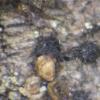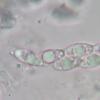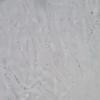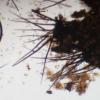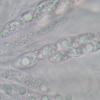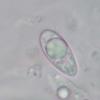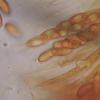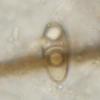
14-11-2015 13:36
 Tanja Böhning
Tanja Böhning
Bonjour, Malheureusement je ne peux pas montrer u

19-11-2015 21:44
 Björn Wergen
Björn Wergen
Hi friends,I am looking for the following article,

18-11-2015 17:59
Carmel SammutFound on dead leaves of Laurus nobilis last week,

17-11-2015 22:33
 Bernard CLESSE
Bernard CLESSE
Bonsoir à tous,Voici un Elaphomyces trouvé sous

17-11-2015 21:03
Patrice TANCHAUDBonsoir,sur feuillu, asques 160 µm en moyenne, sp

16-11-2015 16:12
 Joop van der Lee
Joop van der Lee
Found on cow dung.Perithecia 790x395 umAgglutinate
Setose pyrenomycete
Gernot Friebes,
07-07-2015 13:30
here is the second fungus. Again a short description:
On decorticated parts of a branch of presumably Fagus. The ascomata have long, dark setae that are slightly bent upwards. The asci are biseriate, negativ in IKI and very delicate. They measure about 80-100 x 12-15 µm. The ascospores are oval, filled with one big and a few smaller drops and measure about 14-16 x 6-7 µm. They are again rather delicate and tend to collapse quickly when observed in water. The paraphyses are filiform.
Thanks and best wishes,
Gernot
Björn Wergen,
10-07-2015 15:32

Re : Setose pyrenomycete
Hi Gernot,
quite interesting, Zaca (portugal) postet a rather similar species in April, I have studied it. But Ascus tips react blue in IKI. Are you sure not to have seen any reaction?
I have identified the collection as Lasiobertia sp, but there was no described species fitting. Without ascus porus reaction, I think your one belongs to Coronophorales.
regards,
björn
quite interesting, Zaca (portugal) postet a rather similar species in April, I have studied it. But Ascus tips react blue in IKI. Are you sure not to have seen any reaction?
I have identified the collection as Lasiobertia sp, but there was no described species fitting. Without ascus porus reaction, I think your one belongs to Coronophorales.
regards,
björn
Gernot Friebes,
11-07-2015 00:50
Re : Setose pyrenomycete
Hi Björn,
thanks for sharing your opinion. It is really quite a peculiar fungus! In the meantime Martina Réblová wrote to me that she believes that this species is Phaeotrichosphaeria britannica. For illustrations and a description see http://www.cybertruffle.org.uk/cyberliber/59351/0081/002/0320.htm. I will check the material to see if the ascospores are indeed finely echinulate.
Best wishes,
Gernot
thanks for sharing your opinion. It is really quite a peculiar fungus! In the meantime Martina Réblová wrote to me that she believes that this species is Phaeotrichosphaeria britannica. For illustrations and a description see http://www.cybertruffle.org.uk/cyberliber/59351/0081/002/0320.htm. I will check the material to see if the ascospores are indeed finely echinulate.
Best wishes,
Gernot


